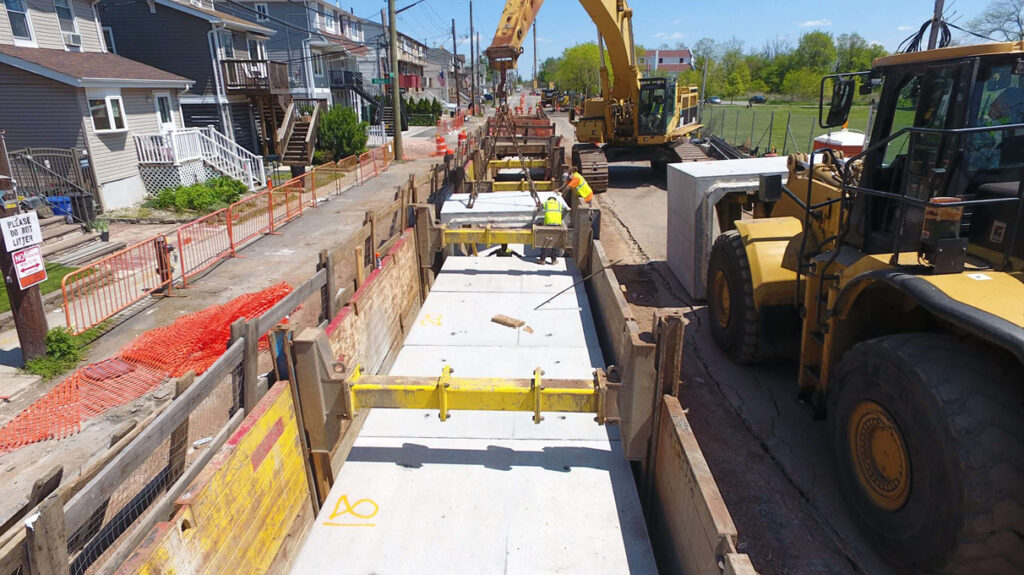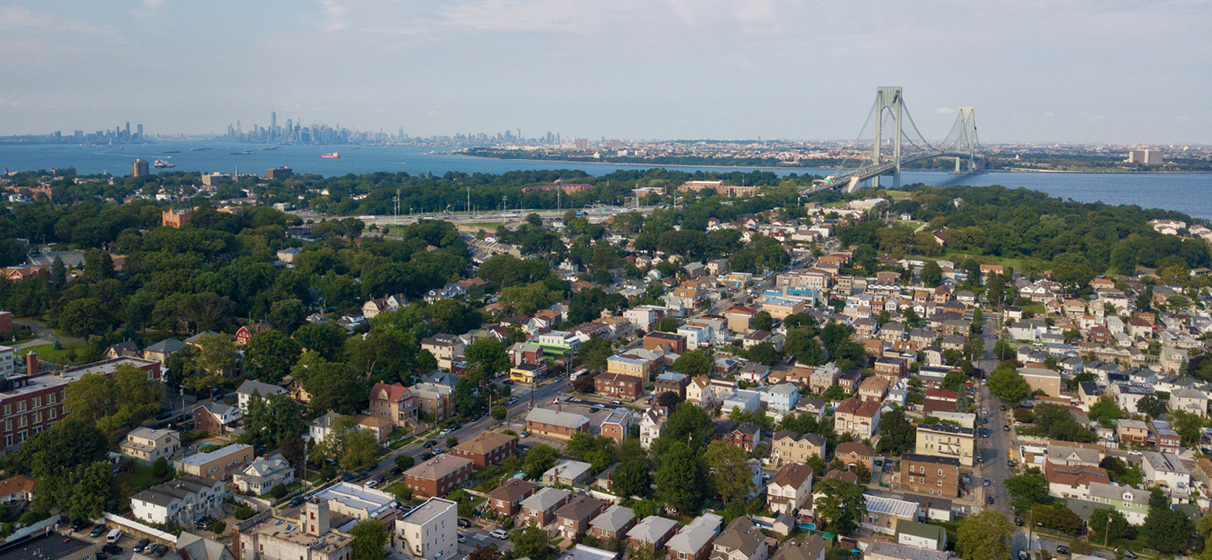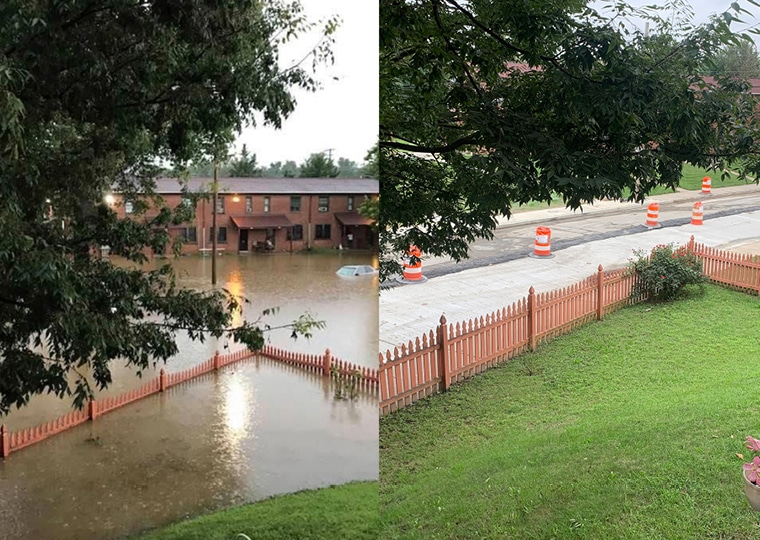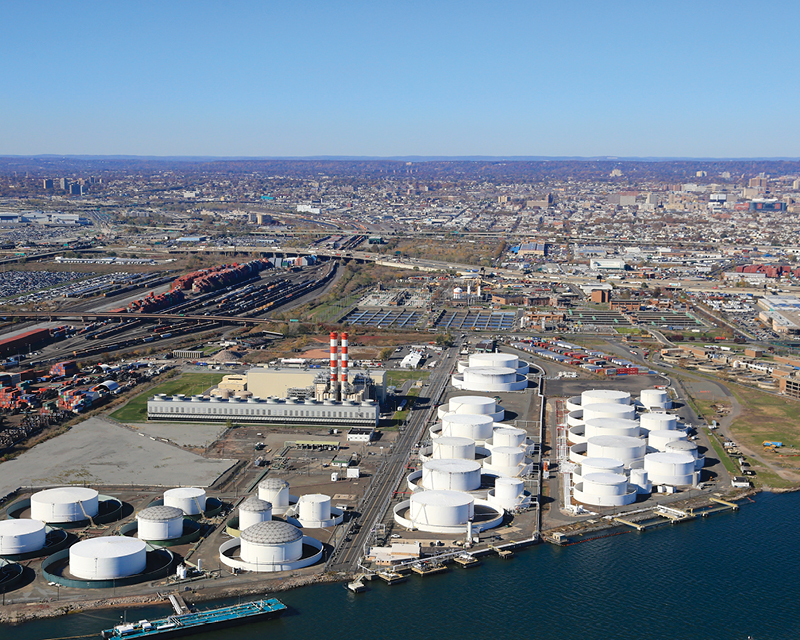STV’s New York design team celebrated alongside their client, the New York City Department of Design and Construction (NYCDDC), following the completion of a crucial $84 million neighborhood infrastructure improvement program to prevent flooding in Staten Island.
The project represents one of the largest post-Superstorm Sandy reconstruction efforts on Staten Island. The Roma and Hett Avenues area of New Dorp Beach was hit hard by the 2012 superstorm and has been plagued by chronic flooding from undersized storm sewers, which has left residents with ponded streets, flooded yards and water-damaged basements.
“This project represents an important step toward making the area far less vulnerable to severe storms,” said Lisa Martusciello, engineering director at STV.
STV’s civil and structural engineering design called for a complete overhaul of the neighborhood’s infrastructure and encompassed the installation of 26,500 linear feet of new storm and sanitary sewers, the replacement of 19,500 feet of water mains and the reconstruction of 23,000 feet of streets and sidewalks. Additionally, multiple new catch basins were added along with grading to facilitate improved surface runoff.
The program included raising street grades by up to 18 inches in some areas to accommodate larger storm sewers capable of handling increased stormwater runoff. This approach allows the new drainage system to use gravity more effectively to channel floodwater away from homes.

Construction presented unique challenges in an area with eight nonstandard streets barely wide enough for one car. STV had to design code-compliant sidewalks and accessibility upgrades within severe space constraints, obtaining waivers where full compliance wasn’t physically possible.
The project significantly affected private homes, creating a complex engineering puzzle. Raising street grades could potentially increase flood risk for adjacent lower-elevation properties. STV conducted extensive drainage studies and developed flood-prevention options for individual homeowners, including seepage basins, property regrading and sidewalk underdrains.
“Sandy changed everything about how we approach projects such as these,” said Robert Gallup, vice president and engineering director at STV. “We had to design a system that could handle not just regular flooding, but the kind of extreme weather events we’re seeing more frequently.”
STV coordinated with multiple city agencies throughout the process, including the New York City Department of Transportation (NYCDOT), the New York City Department of Environmental Protection (NYCDEP) and New York City Department of Parks and Recreation and private utilities, securing all necessary permits. The team produced maintenance and protection of traffic schemes to divert pedestrian and vehicular traffic during construction and coordinated with the Metropolitan Transportation Authority for temporary and permanent bus stop relocations.
The project was funded locally by NYCDOT and NYCDEP with participation from the Federal Emergency Management Agency (FEMA). Construction began in spring 2019 and was managed by the NYCDDC, with JR Cruz of Holmdel, New Jersey, serving as the general contractor.
One of the project’s most innovative solutions came during construction when the team discovered they needed to support a new sewer over previously constructed utilities that were installed early in the project to maintain services to the neighborhood. STV developed an underground pile-supported bridge cradle to carry a large diameter sewer that connected directly into a large precast box culvert that had already been fabricated and was on site. The pipe bridge solution saved both time and money by eliminating costly rework.
“This project demonstrates how smart infrastructure design can transform vulnerable communities into more resilient ones,” Martusciello said. “We’re proud to help communities across the region build back stronger and safer.”







